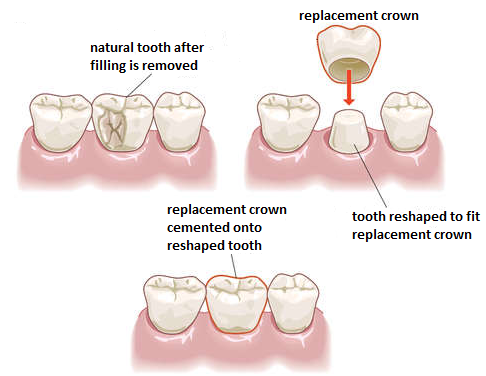A crown acts as a belt to strengthen a weakened tooth. In preparing a tooth for a crown, the outer protective enamel is first trimmed down and the old filling is removed to be sure that there is no hidden decay.
The entire procedure may be fairly simple or may involve multiple steps in order to give the best final result. In any case, there is soreness around the gum and the tooth for several days after the procedure. This is to be expected considering the tooth has been “stirred up” by the crown procedure.
Tooth soreness and the time it takes the tooth to recover depends on:
• Depth/extent of decay
• Depth/extent of the old filling
• Presence of crack lines
• Prior symptoms of the tooth to biting pressure and/or cold
• Missing or broken pieces of the tooth prior to crowning
• Clenching or grinding habits
• Location of the tooth in the mouth

If a tooth is crowned because a piece of tooth is broken, has had prior sensitivity, or has multiple crack lines, the placement of a precision-made crown generally takes care of sensitivity. Sometimes, however, sensitivity remains. In many cases, adjusting the bite on the crown is all that is needed. If sensitivity is caused by a crack that extends beyond the confines of a crown, sensitivity will remain.
If a tooth has decay close to the nerve or has had deep fillings from prior deep decay, the nerve may take longer to recover from sensitivity.
